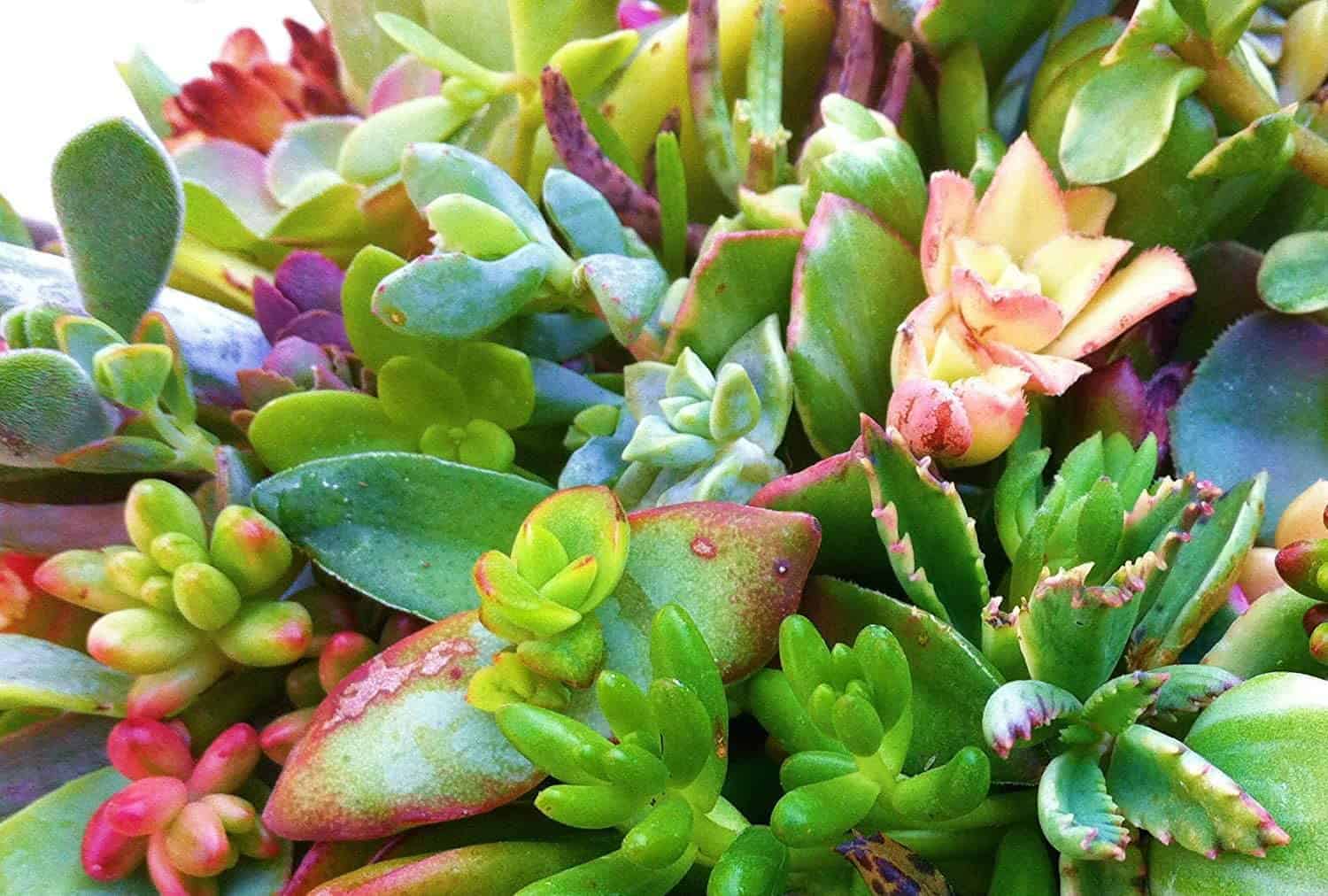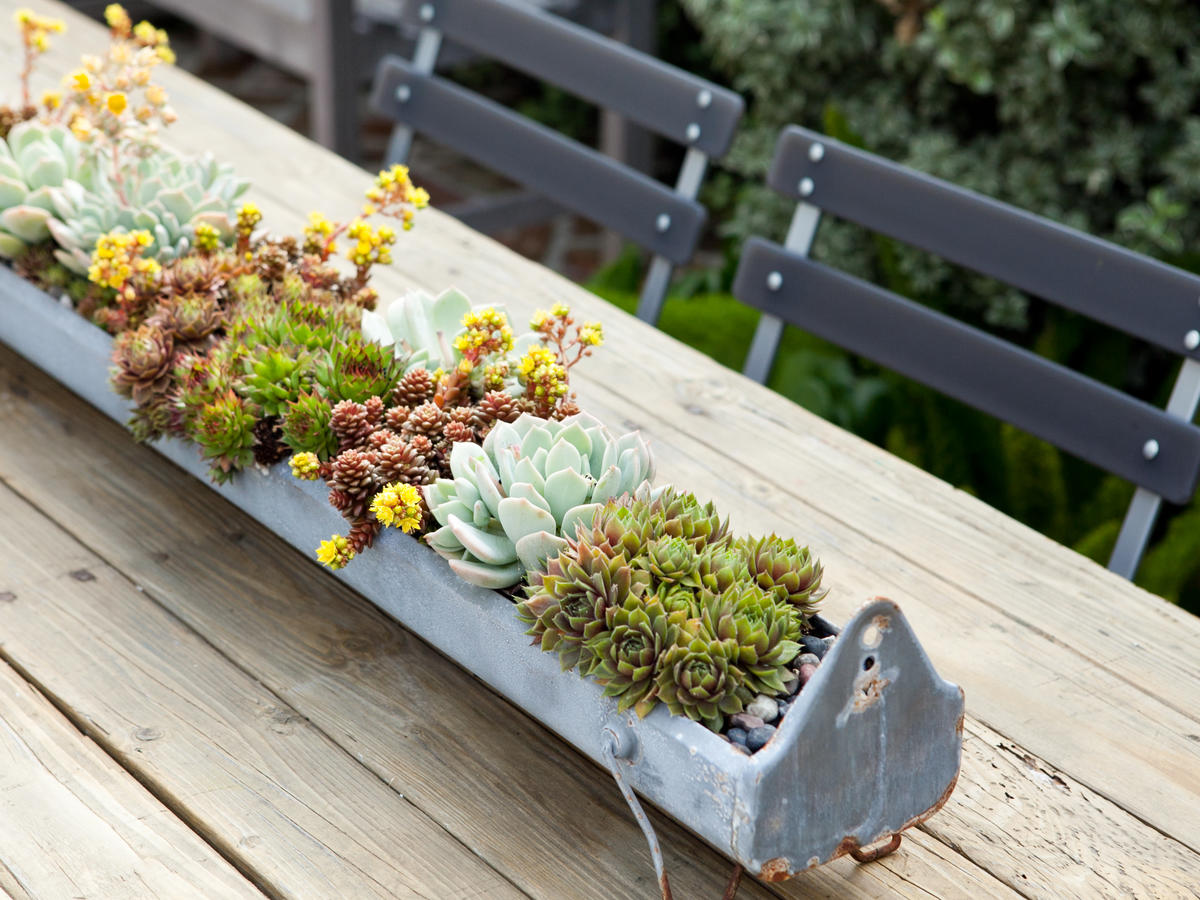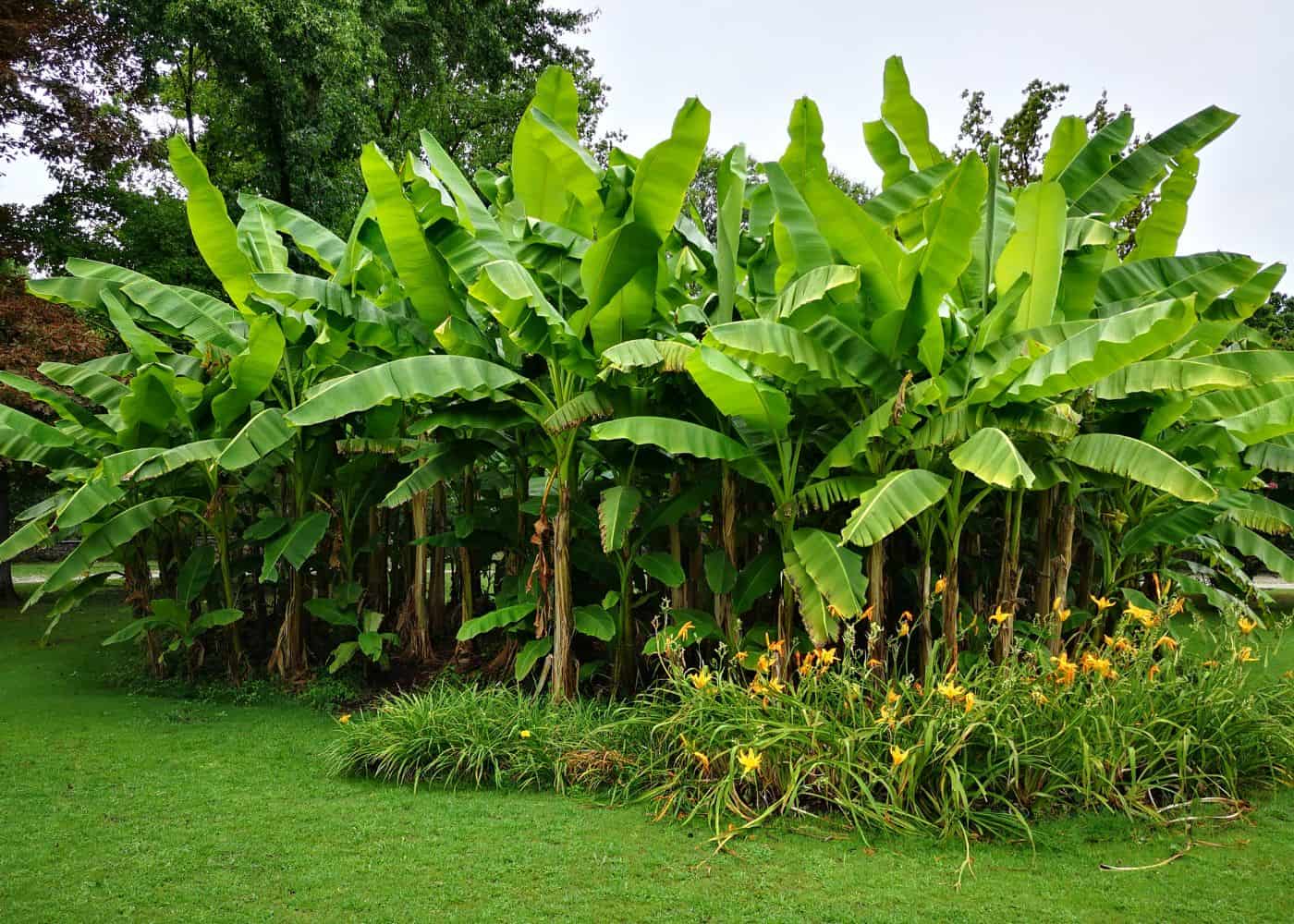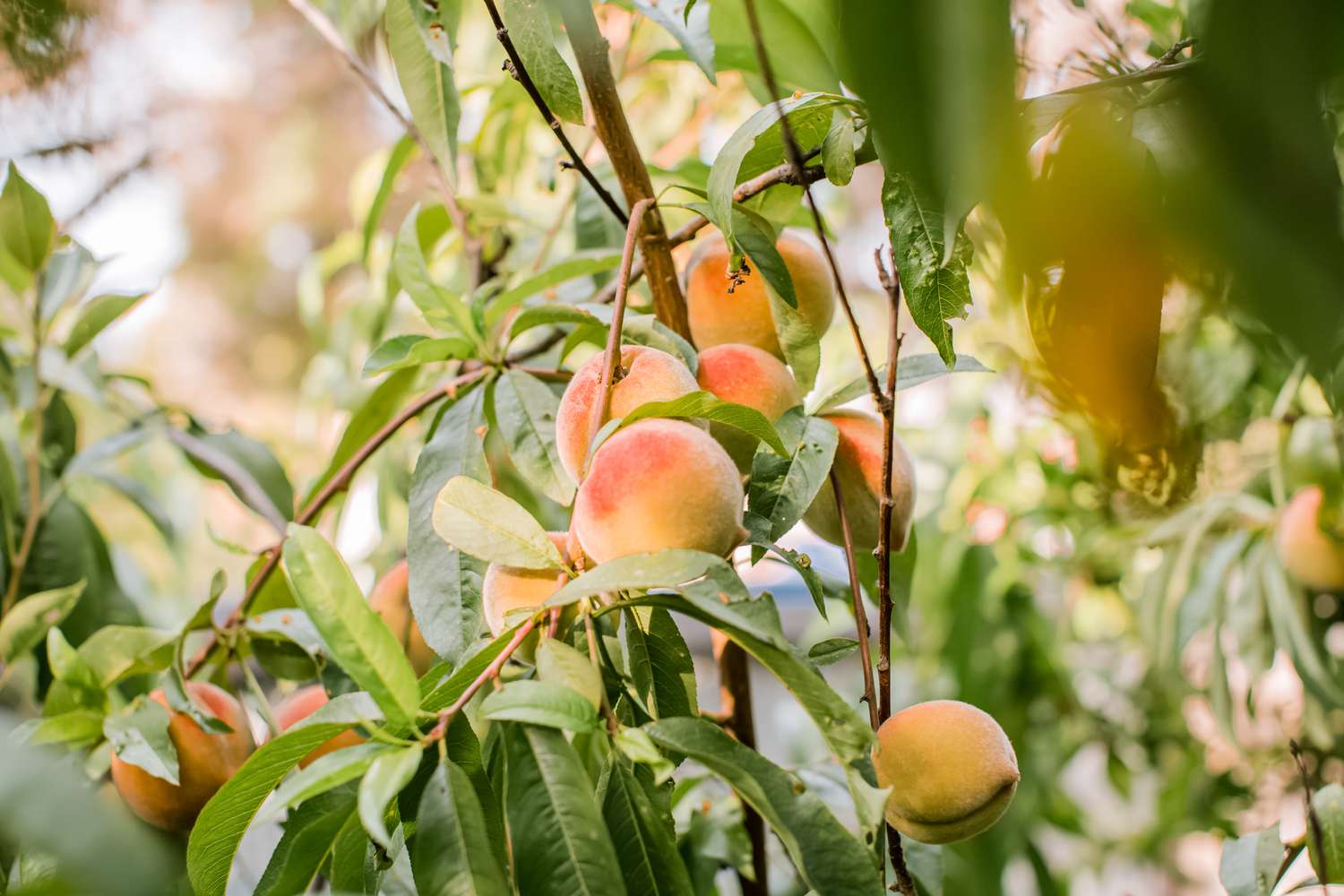Home>Types of Gardening>Edible Gardening>How To Take Care Of Banana Trees


Edible Gardening
How To Take Care Of Banana Trees
Modified: February 7, 2024
Learn how to properly care for banana trees in your edible garden with our comprehensive guide to edible gardening.
(Many of the links in this article redirect to a specific reviewed product. Your purchase of these products through affiliate links helps to generate commission for Chicagolandgardening.com, at no extra cost. Learn more)
Table of Contents
Introduction
Welcome to the wonderful world of edible gardening! If you’re looking to add a touch of tropical beauty and deliciousness to your garden, then growing banana trees is a fantastic choice. Banana trees not only provide a striking focal point with their large, vibrant leaves, but they also yield an abundant harvest of sweet, nutritious bananas.
Whether you’re an experienced gardener or just starting out on your gardening journey, caring for banana trees can be a rewarding and enjoyable endeavor. In this article, we will guide you through the essential steps to take care of your banana trees and ensure they thrive.
Before we dive into the specifics, it’s important to note that banana trees are primarily grown in regions with warm, tropical climates. However, with a little extra care and attention, they can also be cultivated in cooler regions. So, don’t let your climate discourage you from experiencing the joy of growing your own bananas!
Now, let’s dig into the details of how to successfully care for your banana trees, from selecting the right location to harvesting ripe, delicious bananas.
Selecting the Right Location
Choosing the right location is crucial for the health and productivity of your banana trees. Here are a few factors to consider:
- Sunlight: Banana trees thrive in full sun, so choose a location that receives at least six to eight hours of direct sunlight each day. Without adequate sunlight, the growth of your banana trees may be stunted, and they may not produce as many fruits.
- Soil: Well-draining soil is essential for banana trees. They prefer loamy soil with good water retention, as constant moisture is crucial. Avoid heavy clay soils that can lead to waterlogging and root rot. Adding organic matter like compost or well-rotted manure to the soil can improve its fertility and drainage.
- Wind Protection: Banana trees have large, delicate leaves that can easily be damaged by strong winds. Planting your banana trees near a fence or wall can provide some wind protection. Alternatively, you can create a windbreak using shrubs or other trees.
- Space: Keep in mind that banana plants can grow quite large. Make sure you have enough space to accommodate their mature size. The distance between each plant should be around ten to fifteen feet to allow for spreading and proper air circulation.
- Temperature: Banana trees prefer temperatures between 75°F and 95°F (24°C to 35°C). If you live in a region with cooler temperatures, consider planting them in a protected area or using frost protection during colder months.
By carefully selecting the right location for your banana trees, you’ll be setting the stage for healthy growth and bountiful harvests. Keep these factors in mind as you move on to the next steps of the banana tree care process.
Planting Banana Trees
Now that you’ve chosen the perfect location, it’s time to start planting your banana trees. Follow these steps for a successful planting process:
- Prepare the Soil: Before planting, prepare the soil by removing any weeds or grass. Dig a hole that is wide and deep enough to accommodate the root ball of your banana tree. Mix in some well-rotted compost or organic matter to enrich the soil.
- Choose Healthy Seedlings: When selecting banana tree seedlings, opt for healthy ones with robust stems and bright green leaves. Avoid seedlings that show signs of disease or damage.
- Planting Depth: Place the seedling in the hole, ensuring that the top of the root ball is level with the soil surface. Gently backfill the hole with soil and firm it down around the base of the plant.
- Spacing: Leave adequate space between each banana tree to allow for proper growth and air circulation. Depending on the variety, spacing may vary, but a general guideline is to plant them approximately ten to fifteen feet apart.
- Watering: After planting, water the banana tree thoroughly to settle the soil around the roots. Keep the soil consistently moist, but not waterlogged, as overly wet conditions can lead to root rot.
- Staking: If your banana tree is tall and top-heavy, it may benefit from staking to provide support. Use a sturdy stake and secure the tree to prevent it from bending or breaking in strong winds.
- Mulching: Apply a layer of organic mulch around the base of the banana tree, leaving a few inches of space around the trunk. Mulching helps to retain moisture, suppress weed growth, and provide insulation to the roots.
Proper planting techniques are crucial for establishing healthy and robust banana trees. Follow these steps to give your plants the best start and set the stage for a successful growing season.
Watering and Mulching
Water and mulch are essential elements in the care of banana trees, ensuring they receive adequate moisture and protection. Here are some guidelines for watering and mulching your banana trees:
- Watering: Banana trees require consistent moisture to thrive. Water deeply and regularly, aiming to keep the soil evenly moist. However, be cautious not to overwater, as excessive moisture can lead to root rot. Monitor the soil moisture levels and adjust your watering schedule accordingly, especially during hot and dry periods.
- Irrigation Methods: Consider using a drip irrigation system or soaker hoses to deliver water directly to the base of the plants. This helps prevent water waste and ensures thorough and efficient watering.
- Mulching: Apply a layer of organic mulch around the base of your banana trees. This can be composed of materials such as wood chips, straw, or dried leaves. Mulching helps conserve moisture, regulate soil temperature, and suppress weed growth. It also adds nutrients to the soil as it breaks down over time.
- Mulch Placement: Ensure that the mulch does not touch the trunk of the banana tree. Leave a few inches of space around the base to prevent moisture-related issues and stem rot. Spread the mulch evenly in a layer about 2 to 4 inches thick.
- Mulch Renewal: Periodically replenish the mulch layer as it breaks down and decomposes. This will maintain its beneficial effects and enhance the overall health of your banana trees.
By providing adequate water and implementing mulching practices, you are creating a favorable environment for your banana trees. These steps will help maintain soil moisture levels, regulate temperature, and suppress weeds, ultimately leading to healthy and productive plants.
Fertilizing Banana Trees
Fertilizing your banana trees is crucial to ensure they receive the nutrients necessary for optimal growth and fruit production. Here are some guidelines for fertilizing your banana trees:
- Choose the Right Fertilizer: Select a balanced, slow-release fertilizer specifically formulated for fruit trees. Look for a fertilizer with a composition of nitrogen (N), phosphorus (P), and potassium (K), as well as essential micronutrients.
- Timing: Begin fertilizing your banana trees in early spring, just before the growing season. Repeat fertilization every 6 to 8 weeks throughout the growing season to maintain a steady supply of nutrients.
- Application: Sprinkle the fertilizer evenly around the base of the banana trees, avoiding direct contact with the trunk. Follow the package instructions for the recommended quantity and distribution. Water the area thoroughly after fertilizing to help the nutrients penetrate the soil.
- Banana-Specific Fertilizers: There are also specialized banana tree fertilizers available in the market. These formulations are specifically tailored to meet the nutritional needs of banana trees. Consider using a banana-specific fertilizer to ensure optimal growth and fruit production.
- Organic Alternatives: If you prefer organic options, compost, well-rotted manure, or organic matter can be used as fertilizer. Apply them around the base of the trees, ensuring they are well decomposed to prevent burning the roots.
- Soil Testing: Conducting a soil test can provide valuable insights into the nutrient composition of your soil. This will help you determine the specific fertilizer requirements of your banana trees and ensure proper nutrient balance.
Remember, fertilization is not a one-size-fits-all approach. The fertilizer requirements may vary based on the age of the tree, soil conditions, and other factors. Regular fertilization according to the specific needs of your banana trees will support healthy growth and abundant fruiting.
Pruning and Trimming
Regular pruning and trimming of your banana trees are essential for maintaining their health, controlling growth, and promoting optimal fruit production. Here are some guidelines to follow for effective pruning and trimming:
- Remove Dead or Damaged Leaves: Regularly inspect your banana trees for any dead or damaged leaves. These leaves can be pruned off, as they serve no purpose and can attract pests or diseases.
- Trim Excess Growth: Banana trees can produce multiple suckers or pups around the base of the main stem. To maintain the plant’s energy and focus on fruit production, it’s recommended to trim excess suckers. Leave only one or two healthy and vigorous pups to grow into future main stems, removing the others.
- Remove Spent Flower Stems: After your banana tree produces fruit, the flower stem will wither and die. It’s important to remove these spent flower stems to prevent the spread of diseases and to allow the plant to focus its energy on new growth.
- Trimming Offshoots: Over time, banana trees can produce offshoots or new plants growing from the base. If you wish to expand your banana plantation, you can separate these offshoots and replant them. However, if you want to control the growth and maintain a single plant, you can trim off these offshoots.
- Prune Diseased or Infected Parts: If you notice any signs of disease, such as leaf spots or fungal infections, it’s important to prune off the affected parts promptly. This will prevent the spread of the disease to the rest of the tree.
- Timing: The best time to prune your banana trees is in early spring, just before the growing season begins. This allows the plant to allocate its energy towards new growth and fruit production.
When pruning or trimming your banana trees, always use clean and sharp tools to make clean cuts. Disinfect your tools between cuts to prevent the spread of diseases. Additionally, keep in mind that overpruning can stress the plant, so be mindful of maintaining a balance.
Regular pruning and trimming will help your banana trees stay healthy, maintain a neat appearance, and maximize their fruit production potential.
Controlling Pests and Diseases
Just like any other plants, banana trees are susceptible to pests and diseases. However, with proper care and proactive measures, you can minimize their impact. Here are some tips for effectively controlling pests and diseases in your banana trees:
- Monitor Regularly: Regularly inspect your banana trees for any signs of pests or diseases. Look for chewed leaves, discoloration, spots, or unusual growth patterns. Early detection allows for timely intervention and prevents the problem from escalating.
- Practice Good Sanitation: Maintain a clean and tidy garden area around your banana trees. Remove fallen leaves and debris as they can harbor pests and diseases. Prune off any infected or diseased parts of the tree and dispose of them properly.
- Natural Predators and Beneficial Insects: Encourage natural predators and beneficial insects such as ladybugs, lacewings, and predatory wasps to help control pest populations. Avoid using broad-spectrum pesticides that may harm beneficial insects.
- Organic Pest Control: Consider using organic pest control methods such as neem oil, insecticidal soaps, or homemade remedies like garlic spray or chili pepper mixtures. These options are safer for the environment and will not harm beneficial insects.
- Banana-Specific Pests: Keep an eye out for common banana tree pests like banana aphids, banana weevils, and banana fruit flies. If you notice an infestation, take immediate action using suitable organic or chemical control methods to prevent further damage.
- Disease Prevention: Ensure good airflow and minimize excessive moisture around the base of the banana trees to prevent fungal diseases. Remove any diseased plant material promptly and apply fungicides when necessary.
- Maintain Nutrient Balance: A healthy and well-nourished banana tree is more resistant to pests and diseases. Ensure your banana trees receive proper fertilization and maintain a balanced nutrient profile to strengthen their natural defenses.
Remember, prevention is key when it comes to controlling pests and diseases. Regular monitoring, good sanitation, and implementing organic pest control methods will help keep your banana trees healthy and thriving.
Harvesting Banana Trees
Harvesting the ripe and delicious fruits of your banana trees is a rewarding experience. While the timing of the harvest depends on the banana variety and climate, here are some general guidelines to help you know when and how to harvest your bananas:
- Observe Color Change: As bananas ripen, they undergo a color transformation. Depending on the variety, the green skin will gradually turn yellow or develop a golden hue. Wait until the bananas reach the desired color before harvesting.
- Feel the Texture: Gently squeeze the banana. Ripe bananas will yield slightly to gentle pressure, unlike unripe ones that feel firm. However, avoid squeezing them too hard to prevent bruising.
- Inspect the Fruit: Examine the bananas for any signs of damage or pests. Harvest only the healthy fruits and leave any damaged or diseased ones behind.
- Harvesting Technique: Use a sharp knife or pruning shears to cut the bunch of bananas from the stem. Cut the stem a few inches above the topmost hand of bananas to avoid damaging the fruit. Be careful not to drop or roughly handle the harvested bunch to prevent bruising.
- Support the Bunch: When harvesting a large bunch, use your other hand to support the bunch while you cut it. This ensures that the weight of the bunch doesn’t cause it to fall and potentially damage the bananas or the tree.
- Timing: Harvest bananas when most of the fruits on the bunch have reached the desired color. Leave a few less mature bananas on the bunch to allow them to ripen off the tree.
- Ripening: If you harvest your bananas when they are still slightly green, you can allow them to ripen off the tree. Place the bananas in a warm and dry area, such as a kitchen countertop. They will continue to ripen naturally over a few days.
Enjoy the fruits of your labor by savoring the sweet taste of homegrown bananas! Harvesting at the right time will ensure that you experience the full flavor and delight of your homegrown bananas.
Winter Care for Banana Trees
Winter can pose challenges for banana trees, especially in regions with colder climates. By providing proper winter care, you can protect your banana trees and ensure their survival. Here are some essential tips to help your banana trees through the winter:
- Protect from Freezing Temperatures: Banana trees are sensitive to frost and freezing temperatures. Before the first frost hits, prepare your trees by covering them with protective materials. Use blankets, burlap, or frost cloth to wrap around the trunk and leaves. Secure the coverings in place but ensure there is some airflow to prevent moisture buildup.
- Insulate the Root Zone: Apply a thick layer of mulch around the base of your banana trees to insulate the root zone. This helps protect the roots from freezing temperatures and helps retain soil warmth.
- Buttress the Trunk: For larger banana trees, you can provide additional support to the trunk by wrapping it with burlap or thick blankets. This helps protect the vulnerable trunk from cold winds and extreme temperatures.
- Reduce Watering: During the winter months, reduce the frequency of watering your banana trees. Dormant banana trees require less water, and overwatering during this period can lead to root rot. However, ensure the soil doesn’t completely dry out.
- Monitor Indoor Banana Trees: If you’re growing banana trees in containers, consider bringing them indoors during the winter. Choose a location that receives ample sunlight, maintain proper watering, and avoid placing the trees near drafts or heat sources.
- Prune Dead Leaves: Remove any dead or damaged leaves from your banana trees during the winter. This helps prevent the spread of diseases and allows new growth to emerge in the spring.
- Monitor for Pests or Diseases: While banana trees are relatively dormant during winter, it’s still important to keep an eye out for any signs of pests or diseases. Check the leaves and stems periodically and take appropriate action if any issues arise.
- Prepare for Spring: As winter comes to an end and spring approaches, gradually remove the protective coverings from your banana trees. Resume regular watering and prepare to provide appropriate care for the upcoming growing season.
By implementing these winter care practices, you can help your banana trees survive the colder months and ensure their vitality when spring arrives.
Conclusion
Growing banana trees in your garden can be a rewarding experience that brings tropical vibes and delicious fruits to your doorstep. By following the essential care guidelines outlined in this article, you can ensure the health and productivity of your banana trees.
Start by selecting the right location that provides ample sunlight, well-draining soil, and protection from strong winds. Plant your banana trees properly, taking care to water them adequately and provide a layer of mulch to conserve moisture. Regularly fertilize and prune your banana trees to promote healthy growth and maximize fruit production. Keep an eye out for pests and diseases, taking necessary steps to control them and protect your trees.
When it’s time to harvest, observe the color change and texture of the bananas to determine ripeness. Carefully cut the bunch from the stem and support it to prevent damage. During the winter, take measures to protect your banana trees from freezing temperatures, such as wrapping them in blankets and insulating the roots.
Remember, successful gardening requires observation, care, and a bit of patience. Each banana tree is unique, and adjustments may be needed based on your specific conditions and climate. Embrace the process of learning and adapting as you care for your banana trees.
Now that you have a comprehensive understanding of how to take care of your banana trees, get started on your edible gardening journey and enjoy the delight of homegrown bananas. Happy gardening!








